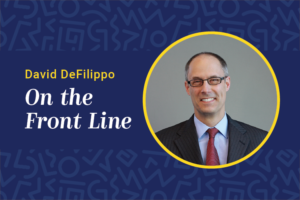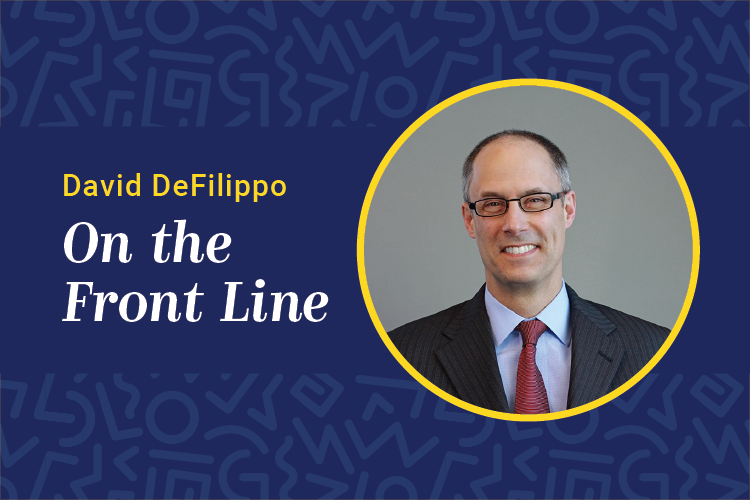 I’ll never forget when, back in 2007, I had a meet and greet with the chief financial officer of my then firm as part of my first three months on the job while I was conducting my current state assessment. One question that I asked sowed the seeds for a long-standing working relationship.
I’ll never forget when, back in 2007, I had a meet and greet with the chief financial officer of my then firm as part of my first three months on the job while I was conducting my current state assessment. One question that I asked sowed the seeds for a long-standing working relationship.
We had finished the formalities of our career and personal backgrounds and started to move into the business phase of our discussion. He started by offering examples of the professional development needs of his team, and after listening I redirected the conversation by asking, “Can we come back to that, and can I ask you a different question? How does this firm make money, and can you explain the business drivers to me?”
The curious look on his face made an everlasting impression on me. He said, “Nobody from human resources has ever asked me about the business. Why do you want to know?” I explained that I needed to learn the business to 1) establish credibility with stakeholders, 2) understand the connection between the business strategy and its human capital capabilities, and 3) role-model being a lifelong learner. I could see the wheels in his head turning as he stood up, went to his file cabinet and came back to our meeting table with a thick file folder full of strategy decks and financial reports. It was then that the teaching, learning and strong working relationship began.
The shift in that first meeting (and many more that followed) that resulted from my question is significant for several reasons.
First, understanding the business strategy and corresponding drivers are fundamental to establishing a talent and learning structure and plan. For example, as the CFO explained the historical revenue sources, margin ratios and competitive strengths and compared those with the future business goals, his tutorial led me to ask more questions which, in turn, expanded this initial meeting to more of a mentoring relationship. Through these regular dialogues, I was building a strong base of knowledge about the business as I continued my current state assessment, which became critical to clearly articulating the future state direction for our learning and talent development plans.
The secondary benefit of this exercise was that the CFO had a recognition that more of our senior-level new hires would also benefit from this type of business literacy education. As a result, he became a staunch advocate for the leader-as-teacher approach that we embedded into our leadership development strategy.
Next, with this new knowledge I was better positioned during my needs assessment intake meetings to speak with other senior leaders and longtime company experts. As they saw me learning and asking thoughtful questions, they were more willing to spend time with me as I connected the dots to what would ultimately become the plan that defined our future talent direction. As I made the connections between the organization’s stated goals and uncovered the causal links to the gaps, that data formed the basis of a human capital plan that I could translate into the language of that industry and business, thereby making it credible to stakeholders. Further, as my industry knowledge grew I found myself explaining the business model externally, which was a telltale sign that I was now fluent in this new language.
The third reason that practice became relevant was with external audiences. We all know that the best way to retain knowledge is to teach, so when I was invited to speak at HR industry events I was able to practice. For example, whenever giving a speech or leading a discussion with my learning and talent brethren, I rooted that conversation in the business goals, challenges and solutions before discussing anything about human capital. This experience reminded me of my undergraduate days when I studied for a semester in Spain and realized that I was hearing and speaking fluently.
The point being that this fluency takes time to build and is a valuable self-learning for practitioners. Having worked in four industries as a learning and talent practitioner in the course of my career, this business literacy proficiency is a muscle that can be built over time and serves as an expression of lifelong learning.
At that time, I was the chief learning officer and Steven Lipiner was the CFO for BNY Mellon Asset Management, a top 10 global asset manager. Lipiner recalls, “Having your HR leadership well-versed in the financial and strategic drivers of the business and industry overall is a differentiator. The value is not just making the HR professional a stronger strategic partner to senior management and less process-driven, but also making finance leadership more well-rounded as it relates to talent implications, which does not naturally enter into their day-to-day equations. The upside of a solid HR and finance relationship is often underestimated and when it’s strong has mutual benefits to both departments and the wider organization.”
As I reflect back on that initial meeting all those years ago, I am grateful for how much I learned from my friend, Lipiner, and know this was a reciprocal relationship because he now regularly asks me about leadership development, coaching approaches and the like.














